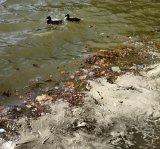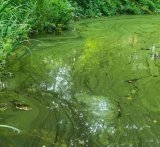Nutrients and Harmful Algal Blooms Research
Waterbodies and coastal areas around the world are threatened by increased nutrient loads, which adversely affect drinking water sources, aquatic species, and other ecological functions and services. Excess nutrient loading is the most widespread water quality problem facing the United States, with far-ranging consequences for human and environmental health and economic prosperity.
EPA's research is addressing nutrient issues and two of the primary impacts associated with excess nutrients in waterbodies: harmful algal blooms (HABs) and hypoxia.
Research results are providing a better understanding of how human activities that cause excess nutrients affect changes in nutrient loading and HAB production, and their associated impacts on human and ecosystem health. Results will be used to assess management alternatives for nutrient reduction, inform criteria development, and provide intervention techniques.

Nutrients
Learn about our nutrients research focused on characterizing nutrients sources and fate in terrestrial, freshwater, and estuarine systems under changing climate patters; characterizing ecological impacts of nutrients, related stressors, and nutrient-climate interactions; developing nutrient reduction approaches and evaluating the effectiveness of agricultural conservation practices; and developing and applying effective solutions to non-point nutrient pollution at scales necessary to achieve water quality goals realized through partnerships.

Harmful Algal Blooms
Learn about our HABs research focused on the assessment and management of HABs and is addressing human and ecological health effects from planktonic and benthic HABs; developing a vulnerability framework to assess HABs risk to drinking water supplies, surface water and drinking water interventions; forecasting; and linking ecological factors to human populations and communities with environmental justice concerns.
